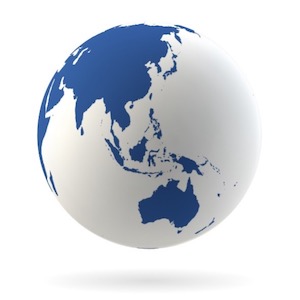By Adrienne Braumiller, Founder & Partner, Braumiller Law Group
On May 23 in Tokyo, Japan, the U.S., and other countries in the Pacific region launched the Indo-Pacific Economic Framework for Prosperity (“IPEF”). The countries included are Australia, Brunei, India, Indonesia, Japan, South Korea, Malaysia, New Zealand, the Philippines, Singapore, Thailand, and Vietnam. The White House claims these countries represent 40% of the world’s Gross Domestic Profit (GDP), and that the Indo-Pacific region supports more than 3 million American jobs and is the source of an estimated $900 billion in foreign direct investment in the U.S.
The Four Pillars of the IPEF
According to the Factsheet published by the White House, the purpose of the IPEF stands on four general “pillars” or commitment concepts:
- Connected Economy: The framework will focus sharing cross-border data flows and developing strong labor and environment standards and corporate accountability provisions. These include topics of online privacy and discriminatory and unethical use of artificial intelligence.
- Resilient Economy: The framework will establish early warning systems, map critical mineral supply chains, improve traceability in key industries, and coordinate on diversification efforts.
- Clean Economy: The framework will focus on clean energy, decarbonization, and infrastructure, including focuses in the areas of renewable energy, carbon removal, energy efficiency standards, and new measures to combat methane emissions.
- Fair Economy: The framework will enact and enforce effective tax, anti-money laundering, and anti-bribery regimes that are in line with existing multilateral obligations under the World Trade Organization, including the exchange of tax information, criminalization of bribery in accordance with UN standards, and effective implementation of beneficial ownership recommendations.
The White House hosted an On-The-Record Press Call addressing the four pillars of the IPEF with National Security Advisor Jake Sullivan, Secretary of Commerce Gina Raimondo, and U.S. Trade Representative Katherine Tai. The transcript of the framework’s On-The-Record Press Call can be found on the White House website here.
The IPEF and The TPP
The IPEF is an important step for the U.S. to bolster its trade influence in the region – a measure taken nearly seven years after the drafting of the Trans-Pacific Partnership known as TPP. The TPP was a trade agreement designed to lower tariffs and non-tariff trade barriers in the Pacific region among Australia, Brunei, Canada, Chile, Japan, Malaysia, Mexico, New Zealand, Peru, Singapore, Vietnam, and the U.S. – with the U.S. as the only country to have withdrawn from the agreement to date.
President Donald Trump withdrew the U.S. from the TPP on January 23, 2017 when the administration determined that the terms of the TPP would do more harm to domestic industries and workers than good. In the On-The-Record Press Call, U.S. Trade Representative Katherine Tai addressed the U.S.’s position on the TPP, stating:
“With respect to TPP, I think that the biggest problem with it was that we did not have the support at home to get it through. If you look back at the years 2015 and 2016, and despite Herculean efforts, it could not be gotten through Congress. And then, in 2017, it was President Trump who took the U.S. out of it. I think that there’s a very, very strong lesson there: that TPP, as it was envisioned, ultimately was something that was quite fragile and that the U.S. was not able to deliver on.”
Furthermore, one significant difference between the TPP and the current IPEF is that the IPEF, in its current form, contains no market access or tariff reduction provisions. This has become the framework’s biggest criticism, though the countries party to the IPEF can address tariff reduction at future summits.
Taiwan, China, and the IPEF
It is notable that Taiwan was not included in the framework launch in the wake of recent criticism by China’s Foreign Ministry, which made a statement on May 24 that the IPEF “will only undermine regional peace and stability and is doomed to fail” and that the framework created a “political and military confrontation by ganging up with some countries” and that the framework “should be open and inclusive” to all countries, such as China. These statements from the Chinese Ministry came soon after the U.S. vowed to defend Taiwan in a military conflict with China. Including Taiwan in regional trade agreements, while excluding China, would be a difficult political move due to Taiwan’s contentious political status. Taiwan is known by the World Trade Organization as “Chinese Taipei” or “The Separate Customs Territory of Taiwan, Penghu, Kinmen and Matsu” and many countries, including the U.S., adhere to the “One China” Policy that the People’s Republic of China has ultimate sovereignty over Taiwan.
However, in the On-The-Record Press Call, U.S. Trade Representative Katherine Tai said “on the Taiwan question . . . I did just meet Minister John Deng in Bangkok . . . so please stay tuned for that” and that the IPEF will be open to new members based on criteria established by the IPEF. There may be more to come with Taiwan regarding U.S. trade, even if it is not included in the IPEF.
For updates regarding the IPEF, visit the White House Briefing Room at www.whitehouse.gov/briefing-room/.
Read more articles by this author: https://www.braumillerlaw.com/author/adriennebraumiller/

